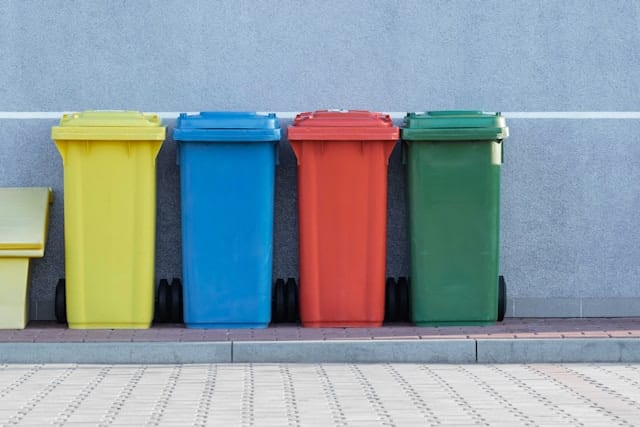What Are Effective Methods for Recycling E-Waste in the UK?

Have you ever wondered about the life of your discarded electronic devices? From your old mobile phones to your outdated laptops, these items fall into the category of electronic waste, or e-waste. As our reliance on technology grows, so does the e-waste problem. Yet, effectively recycling these devices can unlock a treasure trove of reusable materials while also helping to protect the environment. In this article, we'll delve into the world of e-waste and explore effective methods for handling this type of waste in the UK.
Understanding Electronic Waste
E-waste comprises discarded electrical or electronic devices. When these products reach the end of their life cycle - or simply become outdated in our rapidly-evolving digital age - they risk becoming part of the mounting e-waste problem.
A lire en complément : How Can Augmented Reality Apps Enhance Museum Experiences in the UK?
This is no small issue. It's estimated that the UK generates around 24.9kg of e-waste per person annually, significantly higher than the European Union's average. This waste often includes items like computers, televisions, mobile phones, and household appliances, all of which contain valuable materials that can be recaptured through proper recycling.
However, e-waste can also contain hazardous substances like lead, mercury, and cadmium, which pose environmental and health risks if not managed properly. This makes it essential to understand the correct disposal and recycling methods for electronic devices.
Dans le meme genre : How to Enhance Urban Air Quality with Vertical Gardens in the UK?
The Importance of E-Waste Recycling
If e-waste isn't properly managed, it can have serious environmental impacts. When electronic devices end up in landfills, they can leach toxic chemicals into the soil and water supply. Moreover, irresponsible disposal of these items often leads to e-waste being shipped to developing countries, where inadequate processing techniques can lead to further environmental damage and health issues.
But it's not all doom and gloom. By recycling e-waste, we can mitigate these environmental issues while also reclaiming valuable materials. Many electronic devices contain precious metals like gold, silver, and copper, as well as other recyclable materials like plastic and glass. These can be recovered and reused, reducing the need for new raw materials and thus conserving natural resources.
Collection and Disposal of E-Waste
One of the first steps in recycling e-waste is collecting and sorting the waste. Many local authorities in the UK offer e-waste collection services, often as part of their household waste collection. However, individual responsibility also plays a key role. Many retailers and manufacturers offer take-back schemes, where old equipment can be returned for recycling when a new product is purchased. In addition, there are numerous recycling centres around the country where e-waste can be dropped off.
Once collected, the e-waste needs to be processed for disposal. This usually involves manual sorting to separate different types of waste and remove any hazardous components. The waste is then typically shredded and further sorted into different material types using automated processes.
Effective Recycling Techniques of E-Waste
Materials from e-waste, such as metals, plastics, and glass, can be extracted and reused in various ways. For example, metals can be smelted and reused in new products, while plastics can be melted down and remoulded.
In recent years, more advanced methods of e-waste recycling have emerged. Hydrometallurgical processes use aqueous solutions to extract metals, while biotechnological methods use bacteria or fungi to 'bioleach' metals from e-waste. These techniques are generally more environmentally friendly than traditional methods, as they use less energy and produce fewer harmful emissions.
Towards a More Sustainable E-Waste Management
The ultimate goal is to create a more sustainable e-waste management system. This involves not only improving recycling techniques but also encouraging the reduction and reuse of electronic items.
One key strategy is the promotion of "greener" electronics, which are designed with their end-of-life in mind. This might involve designing products to be more easily recyclable, or using fewer hazardous materials in their production.
Additionally, encouraging consumers to hold onto their devices for longer periods can help reduce the amount of e-waste generated. This could be facilitated by improving product durability, offering better repair services, or even through regulatory measures such as right-to-repair laws.
Whether you're a tech enthusiast or just an average consumer, we all have a part to play in managing e-waste. By disposing of our electronic devices responsibly and supporting sustainable products and practices, we can help make e-waste a problem of the past.
Practical Steps Towards a Circular Economy for E-Waste
While the terms 'recycling' and 'waste management' have become relatively familiar, the concept of a 'circular economy' may not be as widely known. A circular economy focuses on reducing, reusing, and recycling to minimize waste. Unlike a traditional, linear economy—where we make, use, and dispose of products—a circular economy aims to keep resources in use for as long as possible, thereby extracting the maximum value from them.
With regard to e-waste, the circular economy concept requires a shift in how we handle electronic equipment and devices. It's not just about recycling at the end of a product's life cycle, but also incorporating sustainable practices at the design stage and extending the lifespan of products through repair and refurbishment.
Manufacturers, for instance, can design electronic products like mobile phones and computers to be more durable, allowing them to be used for longer. This not only reduces waste but also conserves resources and energy that would have been used in the production of new items. Moreover, designing products to be easily repairable or upgradable can also extend their lifespan, further reducing the volume of e-waste generated.
Another practical approach towards a circular economy for e-waste is enhancing the recycling process to recover more valuable materials. This involves investing in advanced recycling techniques, like hydrometallurgical and biotechnological methods, that can efficiently extract precious metals and other valuable components from disposal waste.
Promoting and incentivising take-back schemes is also an effective way to ensure that discarded electronic devices are returned for proper recycling, rather than ending up in landfills. These schemes could be promoted through awareness campaigns and financial incentives to encourage more consumers to participate.
Conclusion: Shaping the Future of E-Waste Management
Ultimately, the goal is to transform e-waste from a problem into an opportunity. By effectively managing electronic waste, we can not only reduce its environmental impact but also unlock a potential source of valuable materials. This requires a concerted effort from various stakeholders, including manufacturers, consumers, and waste management service providers.
It's clear that the UK's e-waste problem cannot be solved overnight. But with ongoing advancements in recycling technology and a shift towards more eco-friendly practices, we are steadily moving in the right direction. The key lies in embracing a circular economy model for electronic waste, focusing not only on recycling but also on reducing and reusing.
As consumers, we can contribute by responsibly disposing of our electronic devices, supporting manufacturers that prioritize sustainability, and choosing to repair or upgrade our devices instead of discarding them.
Ultimately, it's about changing our mindset. Instead of viewing electronic devices as disposable items, we should see them as valuable resources that can and should be reused and recycled. By doing so, we can help ensure not only the sustainability of our planet but also the longevity of our technological innovations.
